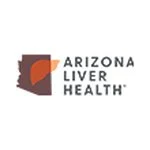Content sourced from HepMag.com
A placebo-controlled study of obeticholic acid showed it improved liver fibrosis with no worsening of non-alcoholic steatohepatitis.
An advanced trial of Intercept Pharmaceuticals’ experimental non-alcoholic steatohepatitis (NASH) treatment found it improved liver fibrosis with no worsening of NASH among participants. The company plans to submit its application for approval of the treatment, obeticholic acid (OCA), to the Food and Drug Administration (FDA) during the second half of 2019.
The Phase III REGENERATE study is a randomized, double-blind placebo-controlled multicenter trial evaluating the safety and efficacy of OCA among 931 people with Stage 2 or 3 liver fibrosis due to NASH. For the FDA to consider the treatment successful, OCA needed to have achieved at least one of two endpoints after 18 months: 1) a one-stage improvement in fibrosis with no worsening of NASH; or 2) a resolution of NASH with no worsening of fibrosis.
The participants were randomized into three even groups to receive a placebo, 10 milligrams of OCA or 25 mg of OCA once daily. They received biopsies to determine their fibrosis severity at the study’s outset and after 18 months of treatment.
In the placebo, 10 mg OCA and 25 mg OCA groups, a respective 11.9 percent, 17.6 percent and 23.1 percent of participants experienced at least a one-stage improvement in fibrosis with no worsening of NASH. The difference between the success rate of the placebo and the 25 mg dose of OCA was considered statistically significant. In the three groups, a respective 7.9 percent, 11.3 percent and 14.9 percent experienced resolution of NASH with no worsening of liver fibrosis. Compared with the placebo, neither success rate of the two OCA doses was statistically significant.
The safety analysis included 1,968 people who received at least one dose of OCA or the placebo. Among them, adverse events were generally mild to moderate. The most common were consistent with the findings of previous studies.
In the placebo, 10 mg OCA and 25 mg OCA groups, a respective 19 percent, 28 percent and 51 percent experienced itching. The large majority of these cases were mild to moderate. Less than 1 percent of participants in both the placebo and 10 mg OCA groups and 5 percent of participants in the 25 mg group experienced severe itching. Less than 1 percent of those in both the placebo and 10 mg OCA group and 9 percent of those in the 25 mg group discontinued treatment because of itching.
OCA was associated with a transient increase in LDL cholesterol that peaked at four weeks of treatment and nearly resolved by month 18. Triglycerides increased rapidly and continually throughout the study among those on OCA.
Three percent of those in the 25 mg OCA group experienced gallstones or cholecystitis (in which gallstones block the cystic duct that drains bile from the gallbladder), compared with less than 1 percent of those on the placebo and 1 percent of those on 10 mg of OCA.
To read a press release about the study, click here.



